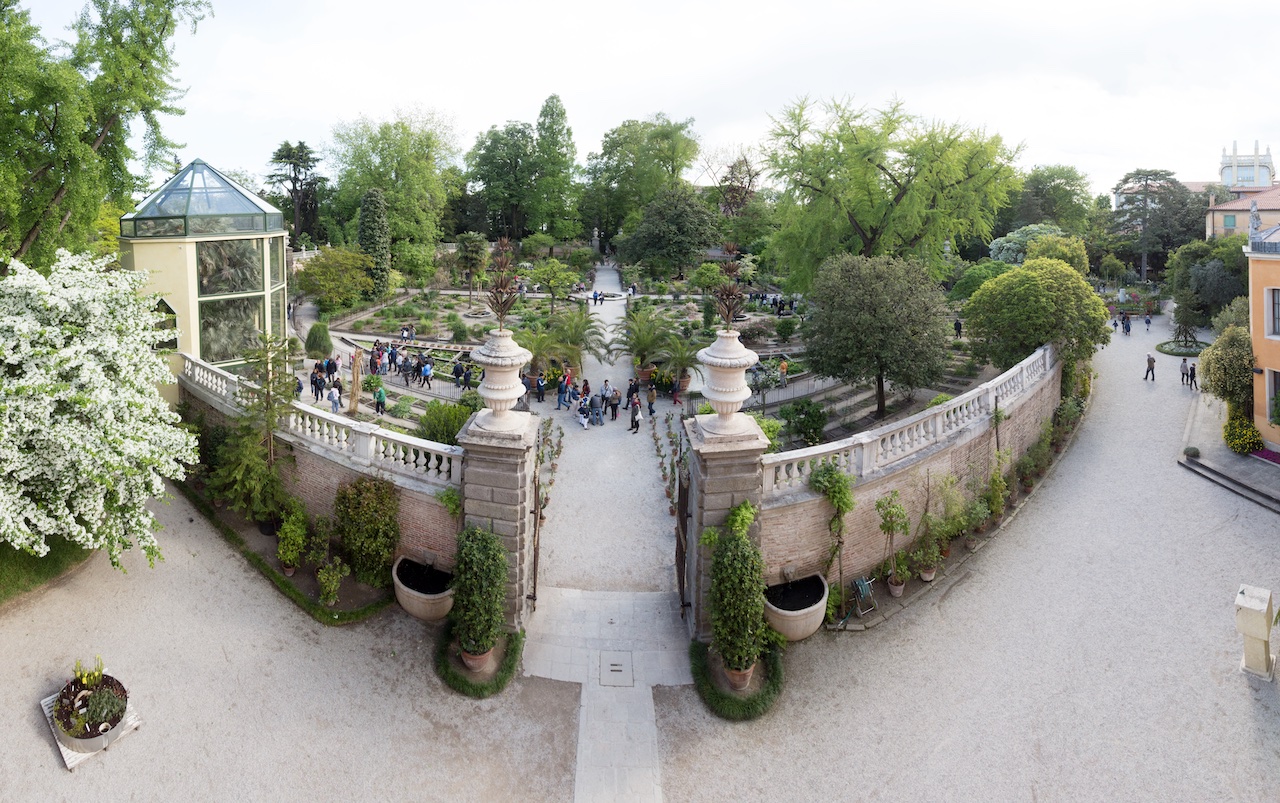In the Botanical Garden of the University of Padua there is a palm tree of San Pietro planted in 1585, and it is the oldest plant in the garden. A century younger is a gigantic plane tree planted in 1680 and with a hollow stem because it was probably struck by lightning. Another leap of a century for the planting of a ginkgo in 1750. And a spectacular magnolia planted probably in 1786 and considered the oldest in Europe. The Botanical Garden of Padua is the oldest in the Western world that still retains its initial shape and location.

In 1997 it was inscribed on the World Heritage List placed under the protection of Unesco. A cultural asset because "it is at the origin of all the botanical gardens in the world". Cradle of science and of the relationships between nature and culture, it has "contributed to the progress of numerous modern scientific disciplines, in particular botany, medicine, chemistry, ecology and pharmacy".
The Botanical Garden born to study medicinal plants
And in fact this extraordinary and precious green area located in the center of Padua had been established in 1585 for the cultivation of medicinal plants. A "rib" of the nearby Padua university - whose fame was already well established - which was used for the study of plants in relation to their use in medical and pharmacological science. Medicines that came directly from nature were called "simple" (hence also the name "garden of the simple"). At the time they were widely used but little known.

The institution of the Garden served precisely this purpose, to make students better study medicinal plants. Which in a short time became very many. The first guardian of the garden introduced and cultivated about 1800 species. Today the Garden of Padua welcomes 3500 different species that represent a significant part of the plant kingdom and that attract not only students but also many visitors along its avenues and around its flower beds.
Goethe's Palm, the oldest plant in the Garden
Among the natural environments of the Mediterranean bush, expertly reconstructed to house the most common plants along the Mediterranean coast, let's go to the discovery of the Dwarf Palm. The same species that we mentioned earlier in the form of a tree as Palma di San Pietro, the oldest palm in the Garden. Also known as Goethe's Palm because in 1786 the great German poet admired it and spoke of it in his essay on the Metamorphosis of Plants. For its age and its value, La Palma di Goethe it is located in a special octagonal greenhouse.

Not far away we cross the Tropical greenhouse, also known as the “orchid greenhouse” because it hosts many types of orchids, from those with large showy flowers to those dotted with small inflorescences. However rare and highly sought after species. Faced with this tropical environment lies the Alpine rock with mountain pines and rhododendrons, saxifrages, edelweiss and many mosses. L'Freshwater environment it is made up of numerous tanks where plants such as the Indian lotus flower, water lilies and the Nile papyrus are grown. Exactly what the Egyptians derived the ancestors of our sheets of paper from. The Succulent plants, which we commonly call succulents, occupy one of the nineteenth-century greenhouses in the winter. Among others, here we also find the prickly pear.
Insectivorous, medicinal and poisonous plants, rare plants and introduced plants
In this garden of wonders we can walk under a cedar ofHimalayas, important because it is the first example of this species introduced in Italy in 1828. And admire the majestic and age-old bald cypresses, native to the swamps of Florida and Louisiana. A particular sector is dedicated to the collections: insectivorous plants, medicinal and poisonous plants, plants from the nearby Euganean Hills and rare, introduced plants.

The latter are the fruit of dense network of international relations that the Botanical Garden of Padua has always maintained for the exchange of seeds, plants and specific scientific material. Among the plants introduced we find the very fragrant lilac, the tulip tree, the freesia, the tree of paradise. In addition, there are about 1300 species that are part of the biodiversity garden exhibition project.
Illustrious example for many gardens in Italy and Europe
With its about 7000 specimens, its approximately 3500 botanical species, its original architectural design, the Botanical Garden of Padua has been a source of inspiration for many gardens in Italy and Europe. “An illustrious example - as Unesco points out - of the aesthetic canons of the Renaissance for the architecture of gardens”. As well as “a fundamental step forward for the history of medicine and botanical science”.
(ph credit Botanical Garden of the University of Padua)





